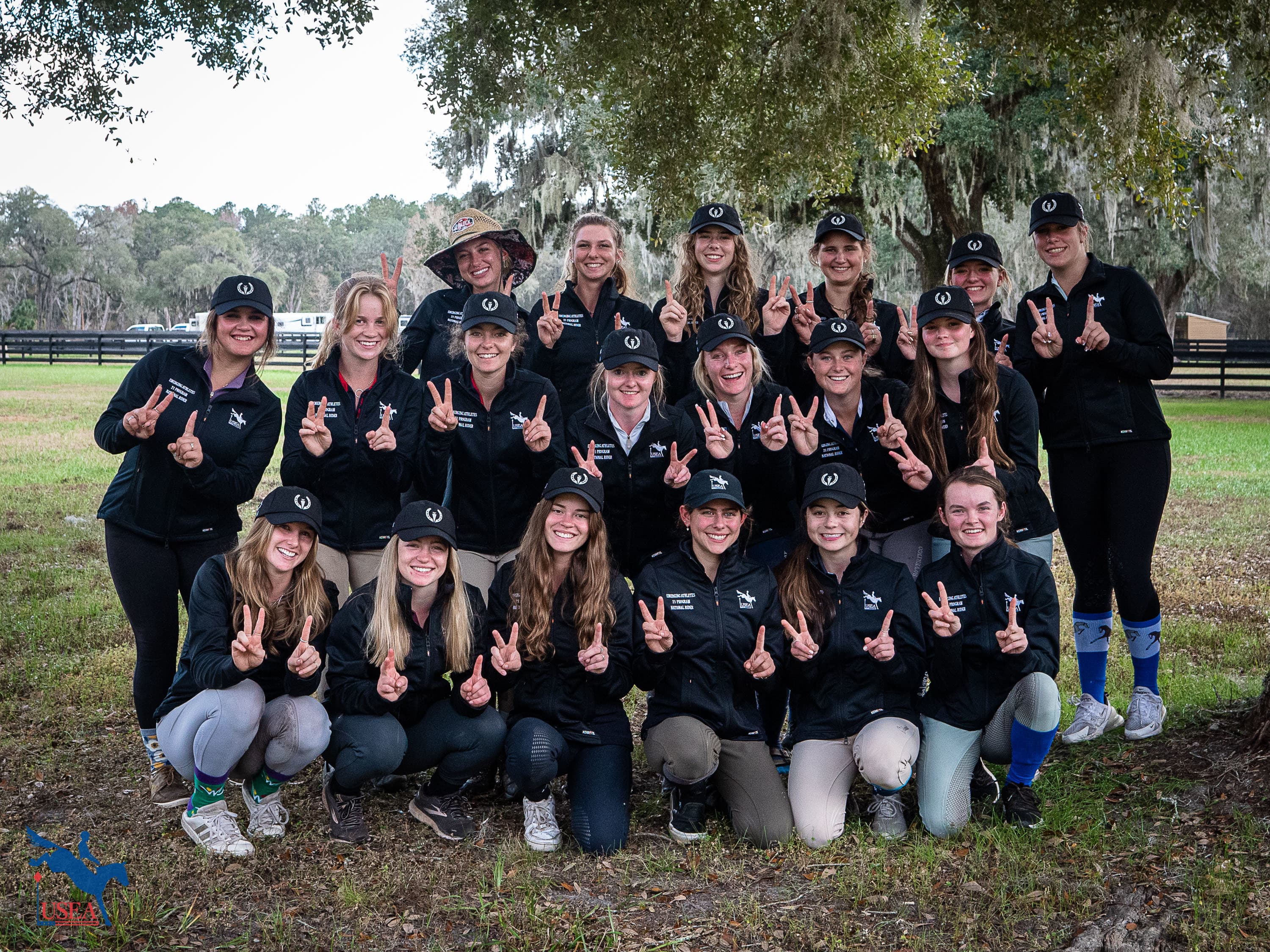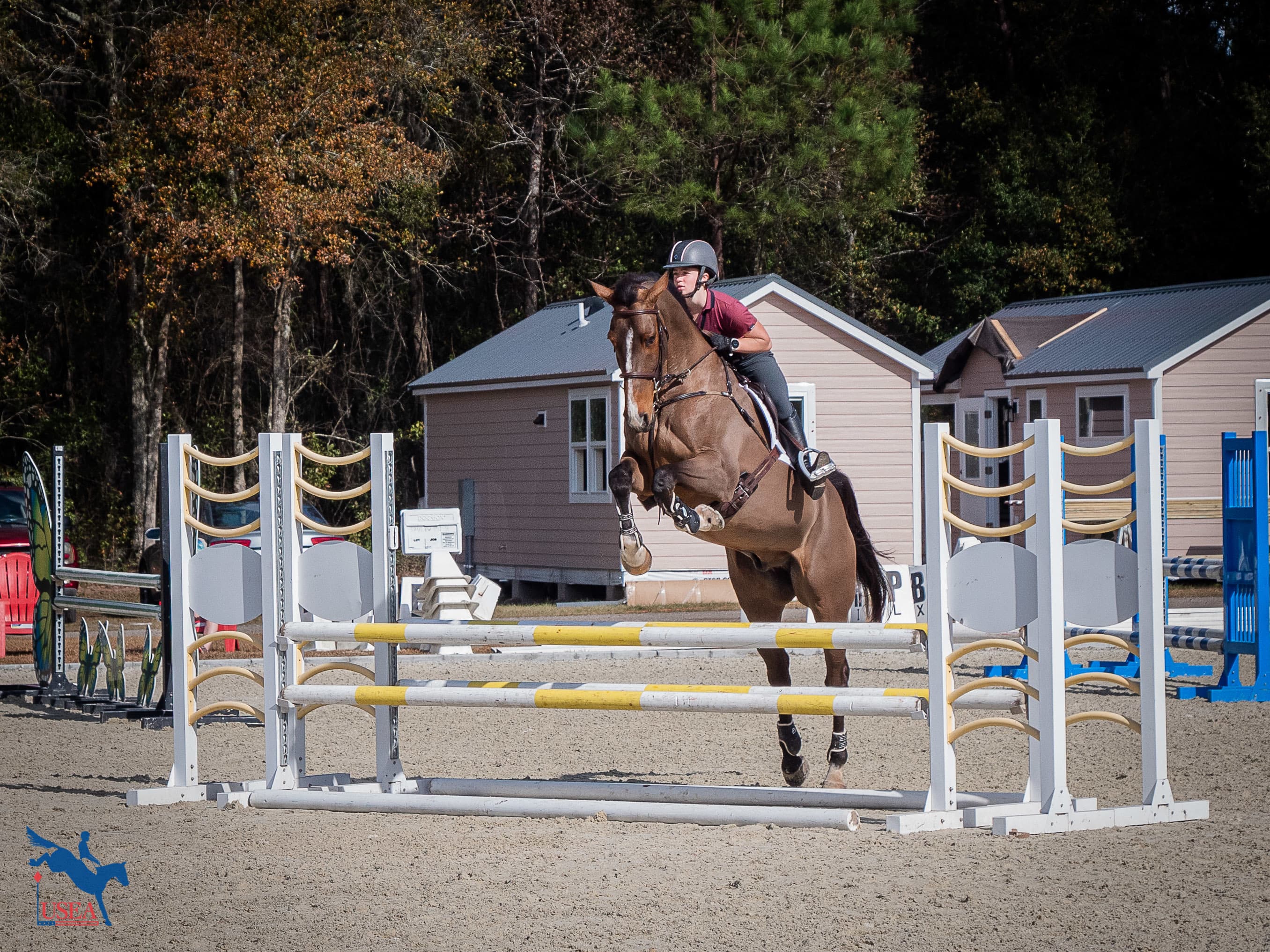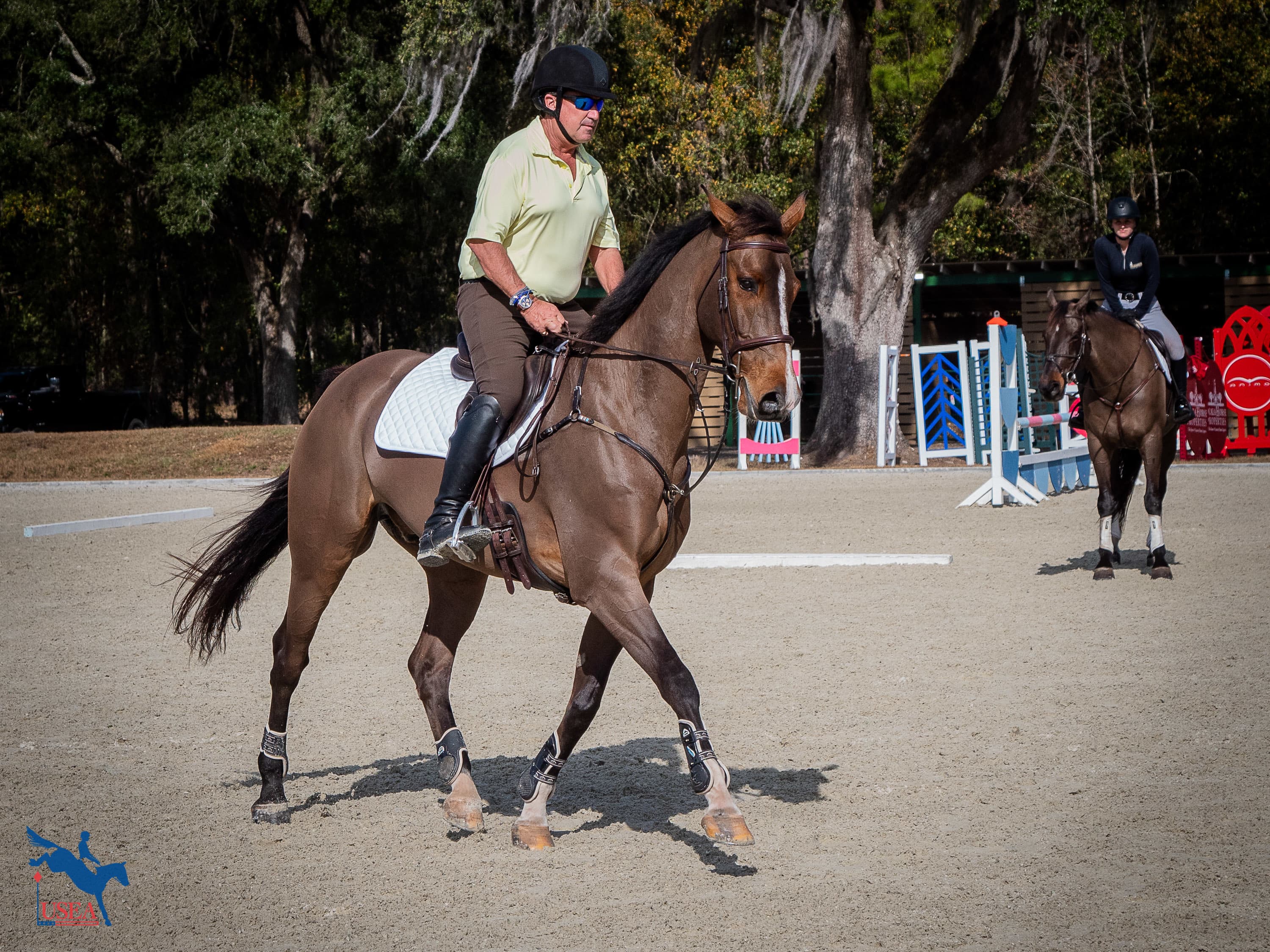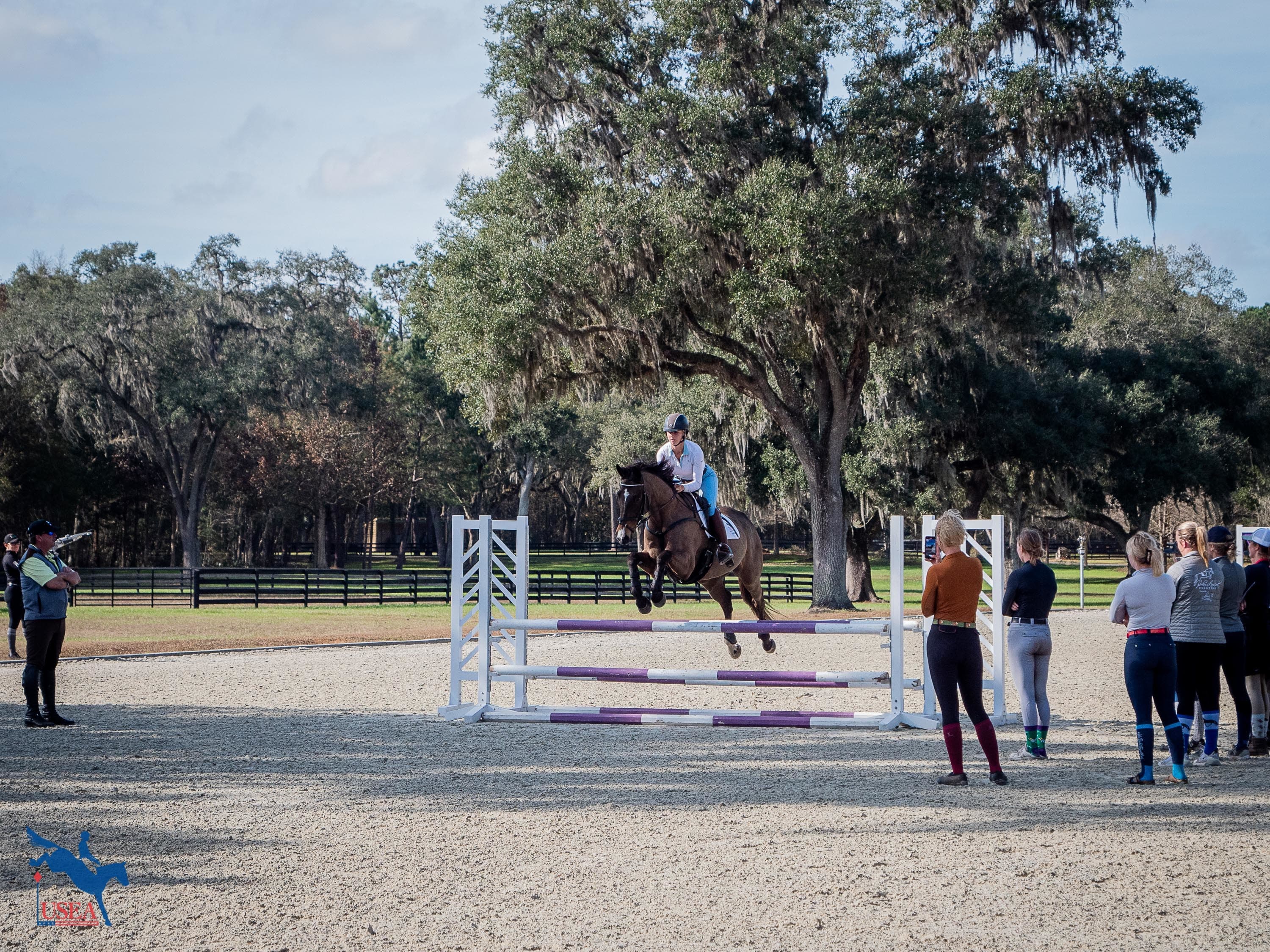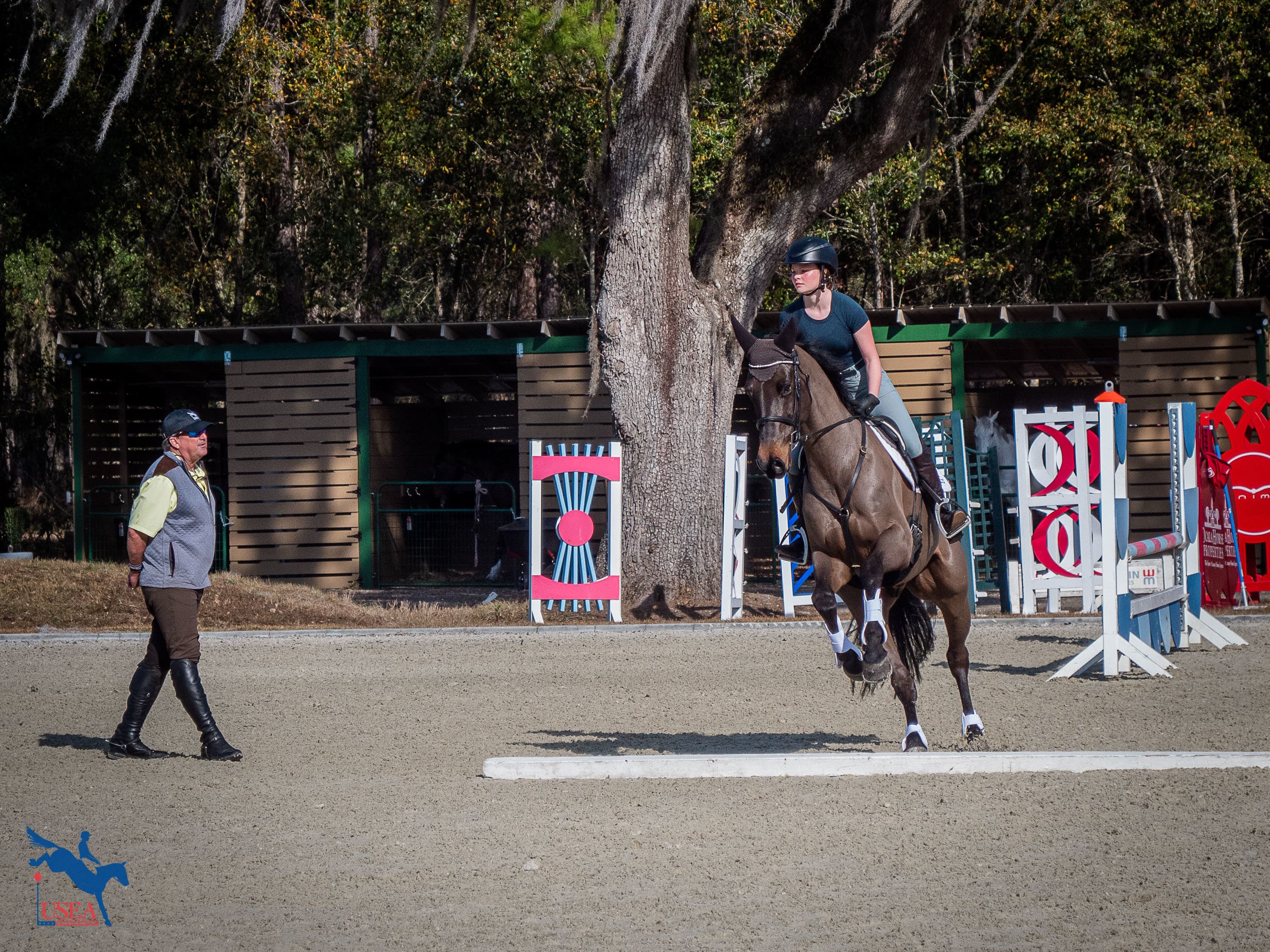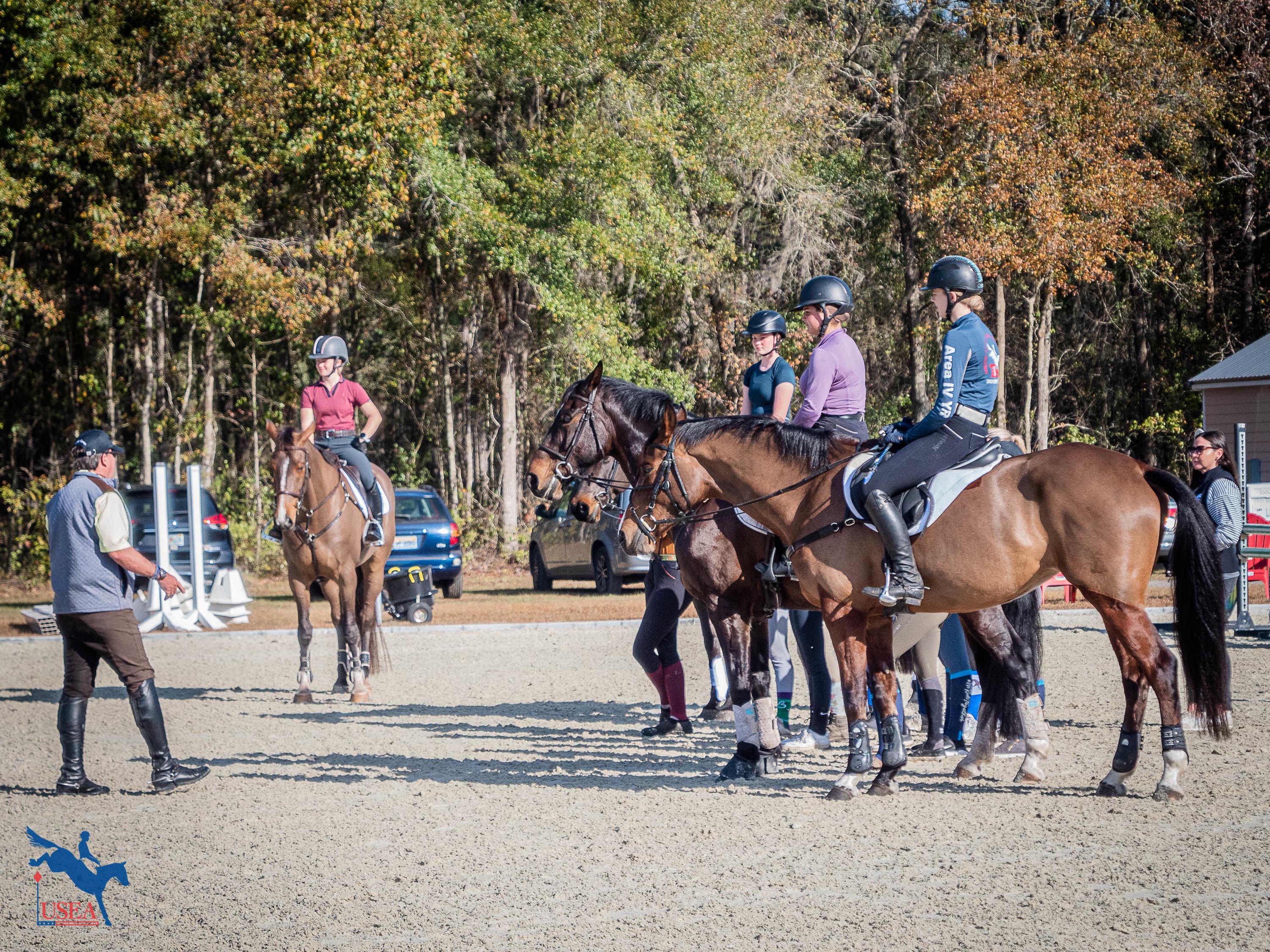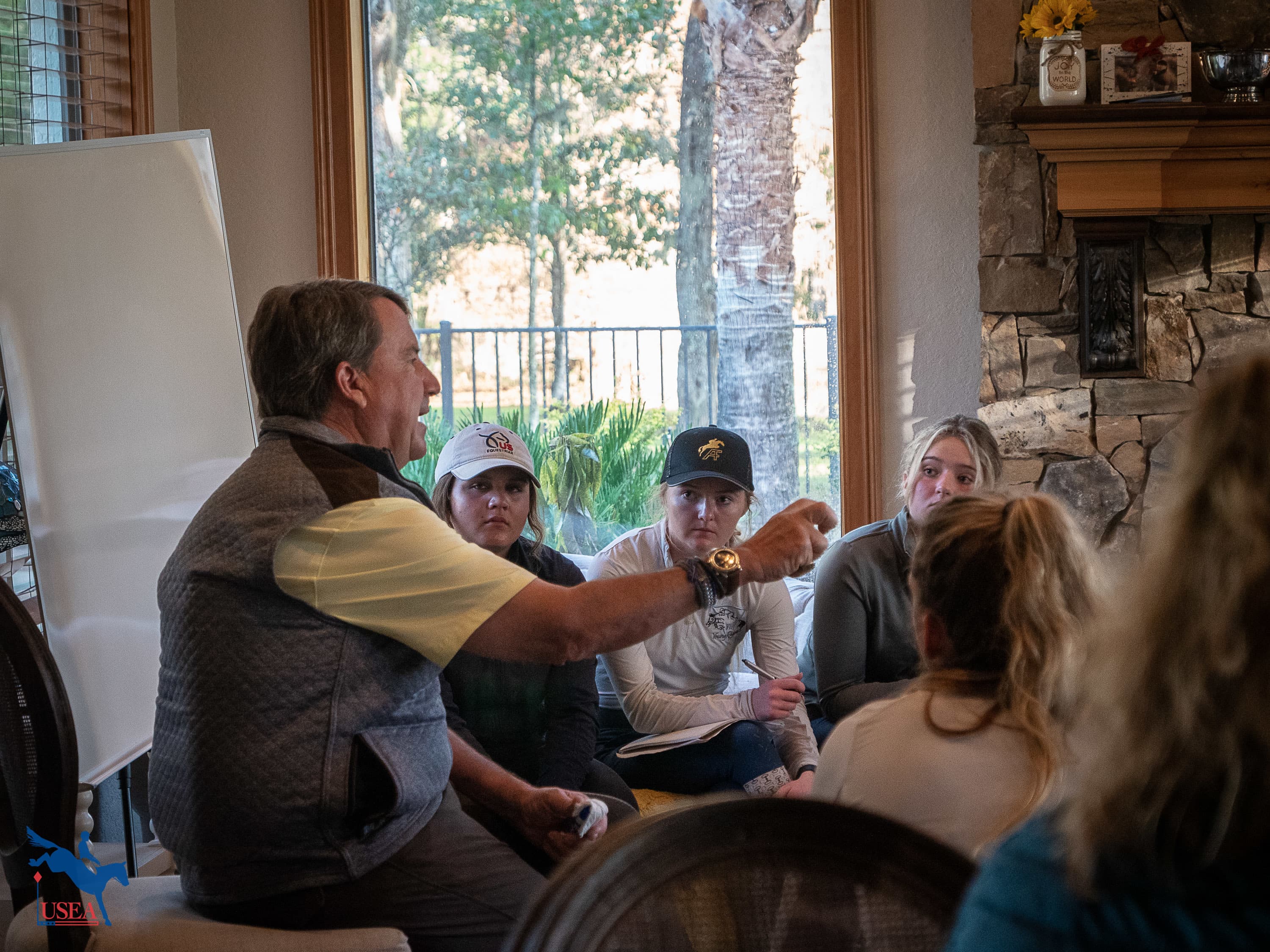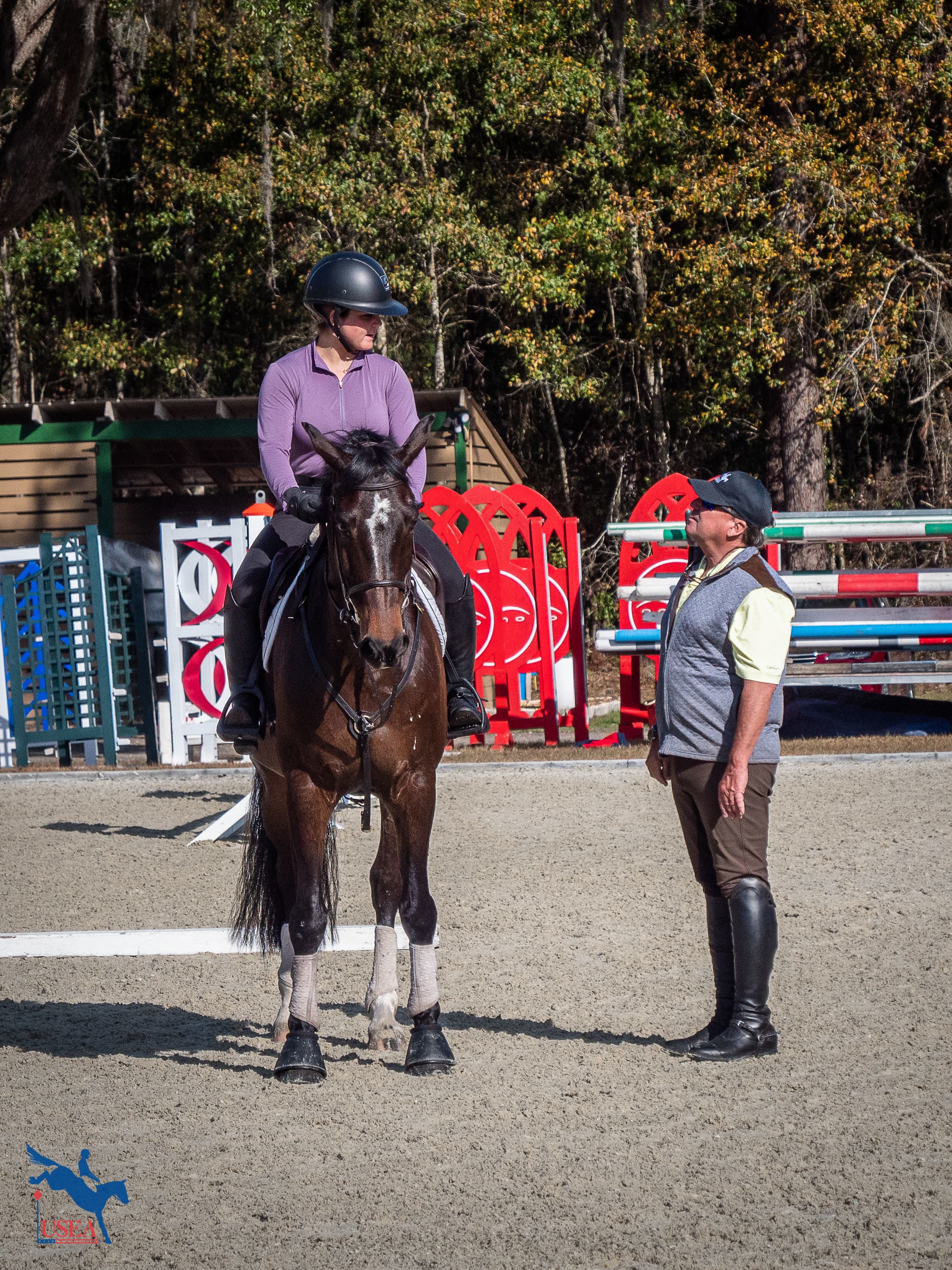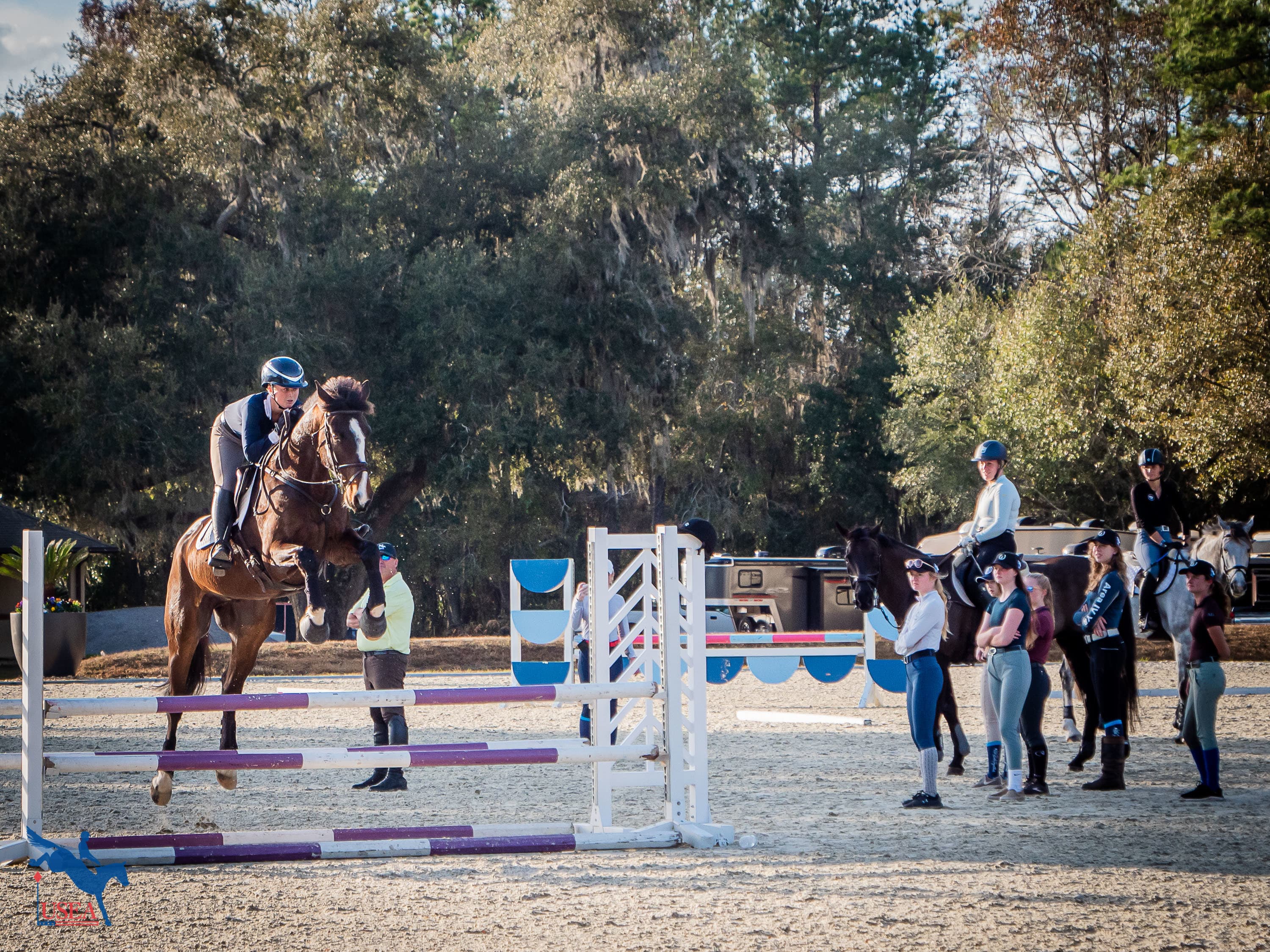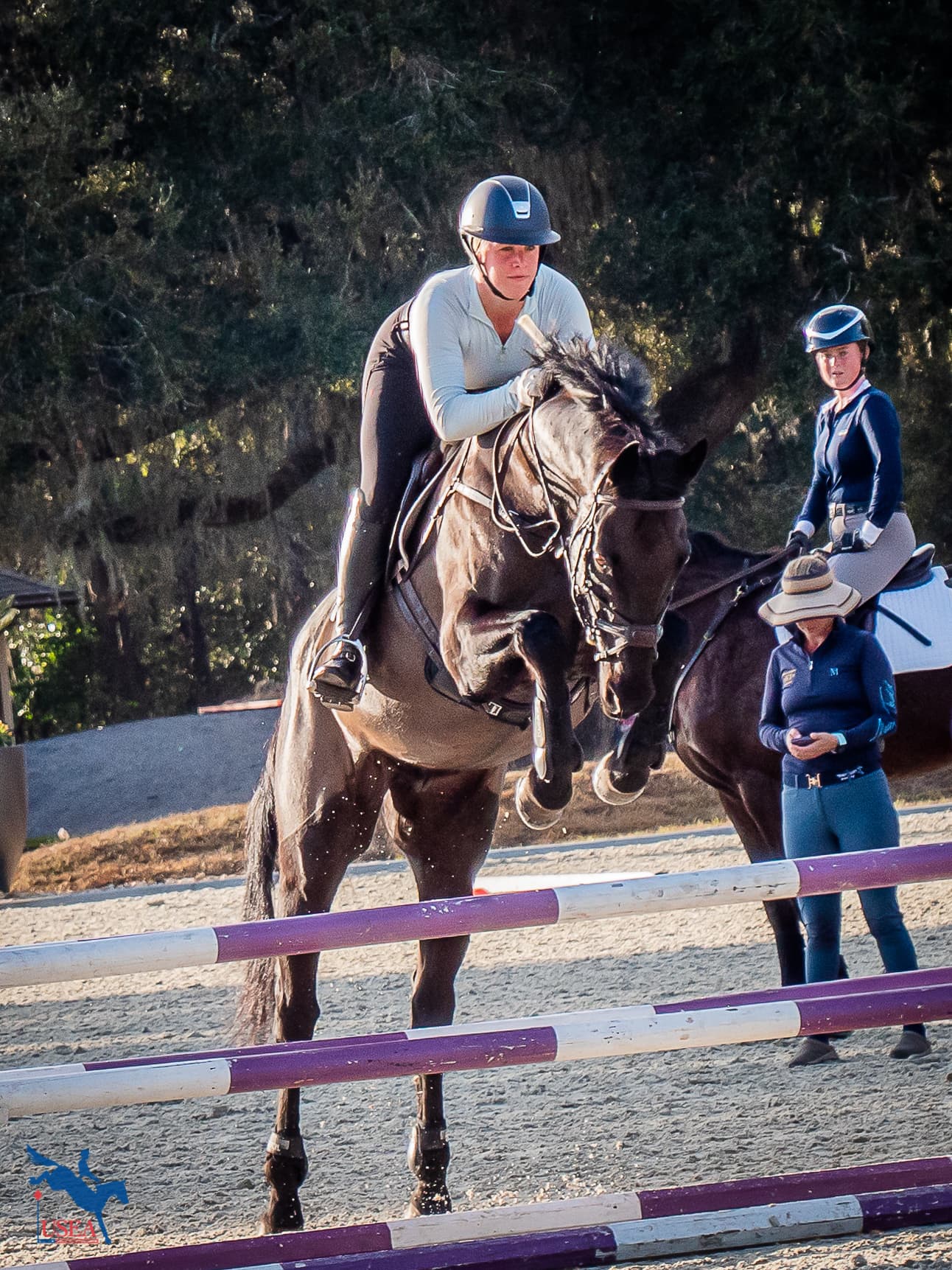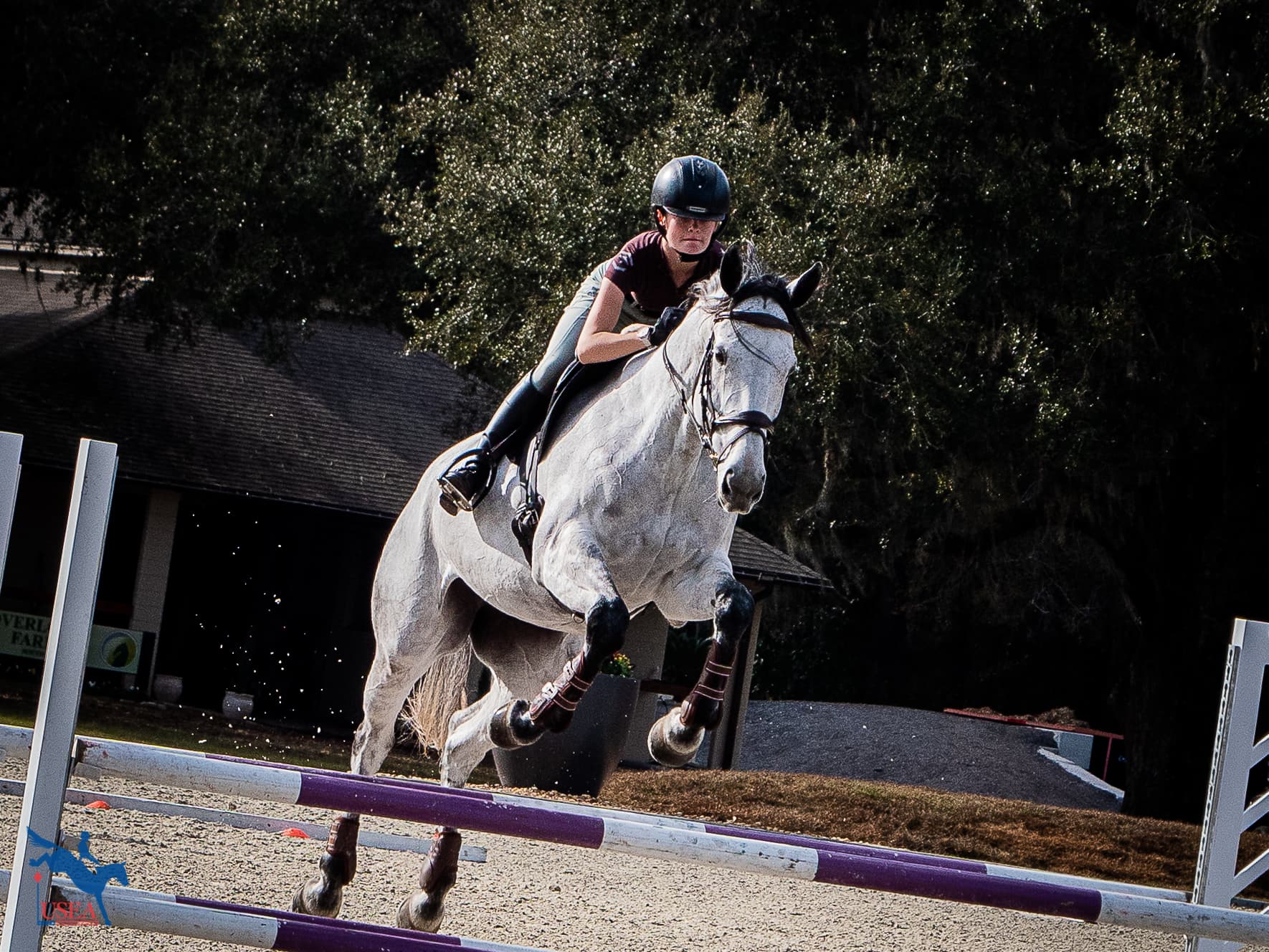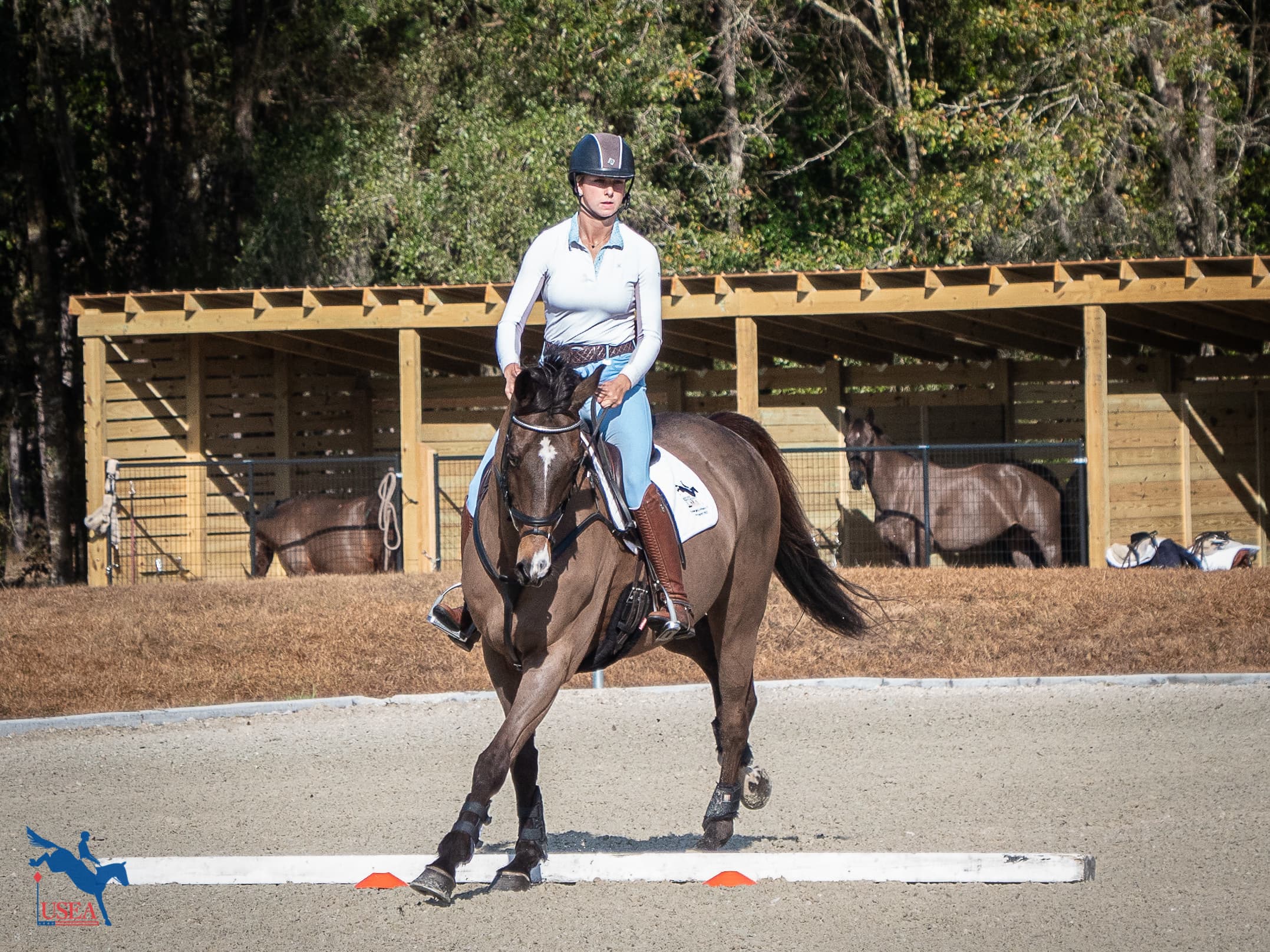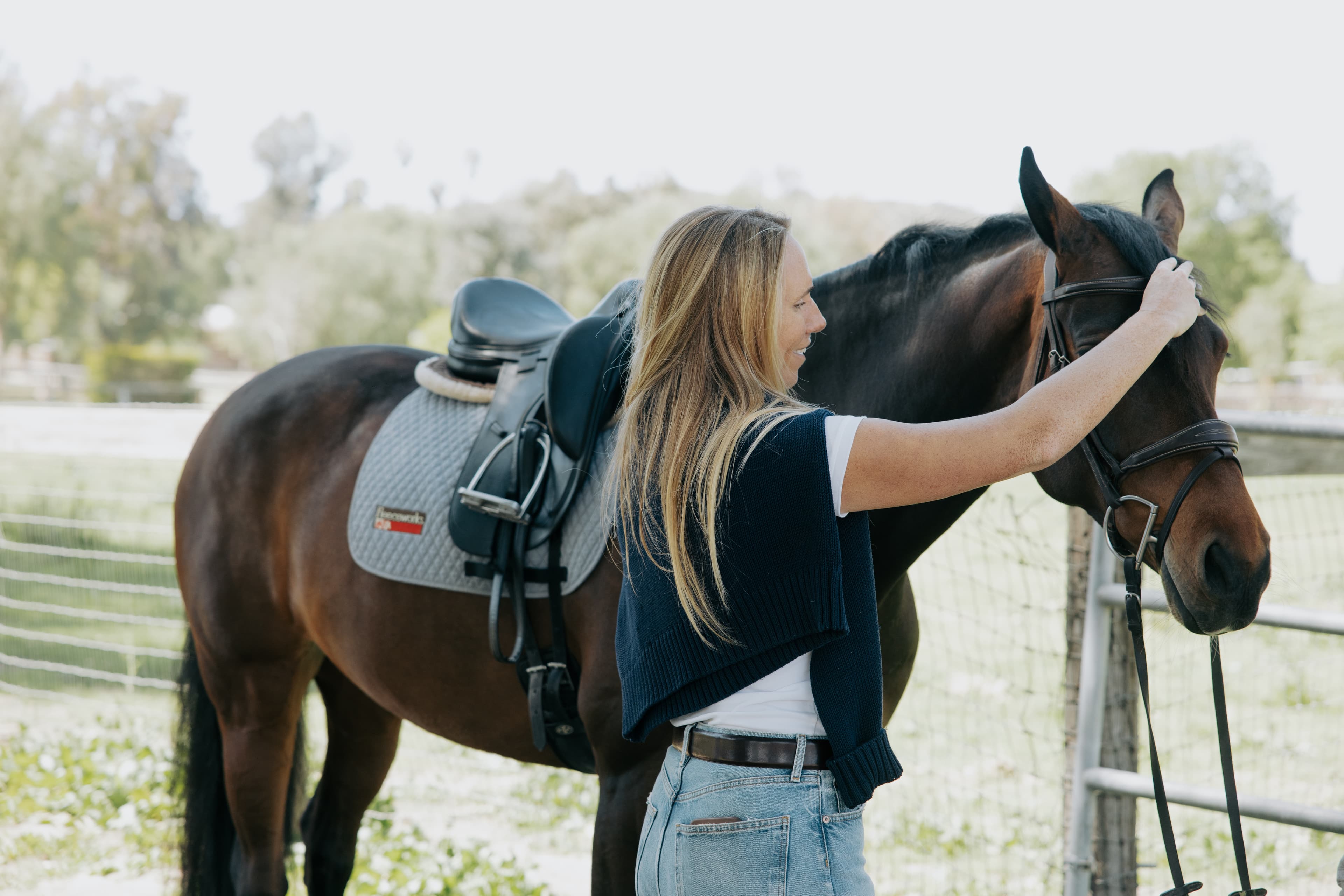Learning to Land and Work during Day Two of EA21 National Camp
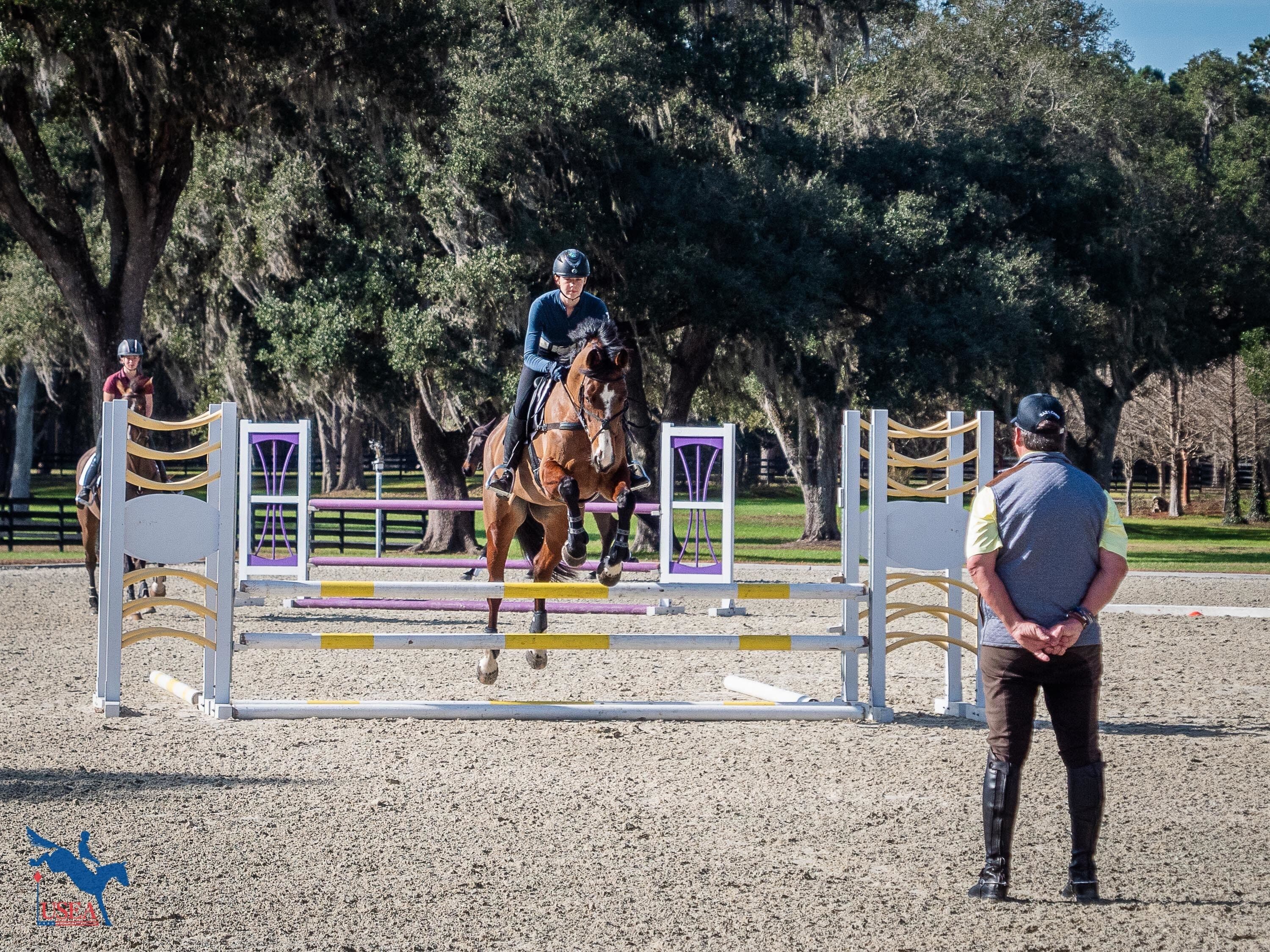
The EA21 National Camp continued on Tuesday for the second day of the five-day camp with a focus on show jumping. The day began once again with a lecture by EA21 Director of Coaching David O’Connor on the theory of jumping. The overarching theme was preparation: how to prepare the horse ahead of time to have the ability to solve a variety of puzzles, prepare before and during the approach to a fence, and prepare as a rider to execute the rider's responsibilities.
O’Connor first discussed the importance of variability in the canter and flatwork in training the horse for this variability. He indicated that ideally, each horse should have seven or eight canters to play with. For certain situations, a large and fast canter is necessary, while at other times a slow canter is the answer to the approaching obstacle. Having these options available not only greatly increases the success of the ride in show jumping, but also serves as a very important safety measure for both horse and rider. He shared that in order to prepare a horse to have the ability for these different canters, no matter what level of competition the horse is competing at, flatwork is key, but that only the most advanced horses will have the many, varying options available to make it to the upper-levels.
As an aspiring trainer herself, Maya Clarkson of Santa Cruz, California, found this concept to be particularly interesting.
“We talked about how your Advanced horse needs to be able to do six and ten [strides] in one line and needs to be super adjustable,” reflected Clarkson, “It is interesting for me producing horses up the levels, thinking about what you need to produce a horse to the highest level. And if the horse doesn't have that, it doesn’t mean it still cannot be super successful, but maybe it’s not gonna be a four-star or five-star horse.”
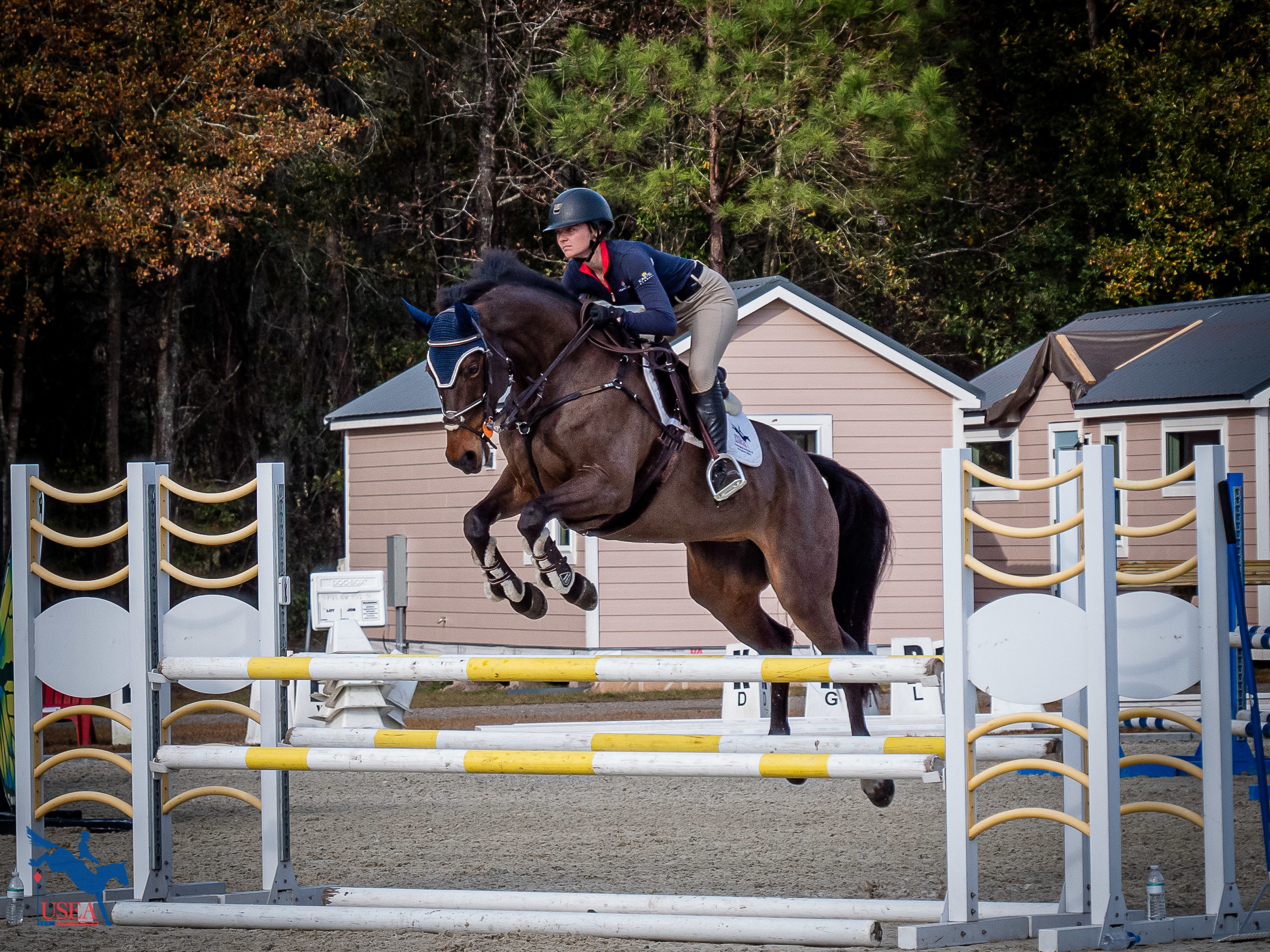
Then, O’Connor shifted the direction to reviewing the rider’s responsibilities and how each rider can prepare on course for jumps ahead of time. The discussion emphasized the order of the responsibilities necessary for having control during the ride. A rider must start with direction, then speed, then move to rhythm, balance, impulsion, and timing. It is imperative that the rider ask themselves, “do I have a foundation jump?” as O’Connor put it. Horses will have a certain speed and way of jumping on their own, and the rider’s role is to adjust this foundation jump to meet the obstacle in front of them. Communication is key in order to be successful with the different phases a particular horse can go through in the same competition. O’Connor noted that a horse can be four different horses on a given day. To prepare for the variability in the course and riding the horse beneath them, a rider must prepare before and after each jump, which was another segment of O’Connor’s discussion.
“Land and work.” This phrase was emphasized by O’Connor during the lecture. On course, riders must always be prepared for what is next and be constantly communicating with their horses. When eventers can do this, O’Connor stated, “that’s what makes courses easier.” A rider should be thinking about what is ahead and specifically preparing eight strides from an approaching fence. One exercise that O’Connor suggested to assist with establishing rhythm was counting strides out loud. He noted that if riders are stressed, they will most likely be yelling out the number of strides, whereas calm riders tend to be quieter and more controlled in their counting.
“Count out loud the last eight strides before you go down to a fence,” he instructed. “You will hear yourself ride. You will hear the tension.”
Tracing back to the lessons from day one, O’Connor noted that it is very important to consider the seat when jumping as the type of seat you need can vary between the phases of competition. As a rider’s stirrups get shorter, such as from dressage to jumping, the rider’s body angle gets more forward, and the neutral position changes. O’Connor outlined that there are three seat positions in jumping: the forward seat, half seat, and full seat. Each of these can be used differently based on the horse’s behavior and level of training. For example, younger, less experienced horses often need a forward seat even though they are going over smaller fences. Additionally, as any horse approaches an obstacle, the rider can feel how the horse reacts to the jump. If the horse moves sideways, that indicates the horse might not want to go over the jump, and the rider should respond by moving to a full seat and communicating with the horse to guide them over the jump. Preparation and seat position will vary throughout the course from the Novice level to five-star and from vertical to oxer fences, so helping riders prepare themselves on course and in training can help them to be successful.
Rochester Hills, Michigan young rider Kiersten Miller found the morning’s education session to be very poignant and was eager to apply what was discussed to the day’s ridden portion of the Camp. “You have to learn how to know when you need to move up to a distance or shorten your distance, and that’s something that I’m not always very quick on,” Miller noted. “Today [in the riding session] I really want to focus on continuing to ride and think about my riding once I land from the first fence. I want to learn how to not stop riding in between the fences.” Miller’s individual goal aligned perfectly with the focus of the day for the developing riders to be able to think and react accordingly during their rides, which was worked on during the mounted portion later in the day.
The under saddle work of the day focused largely on controlling stride length as the horse approached the jump. O’Connor had the riders canter in a circle over ground poles, with four ground poles on each side of the circle. They cantered on the inside of the poles targeting four strides between each pole, and then they cantered on the outside of the poles targeting five strides between the poles. This exercise helped each rider to practice adjusting the canter to meet the stride requirements. During the over fences portion of the session, O’Connor emphasized that riding is not just about how one does something, but what happens in the person’s head to have them actually do it. He had each rider focus on how they landed from the jumps and counting stride lengths between fences.
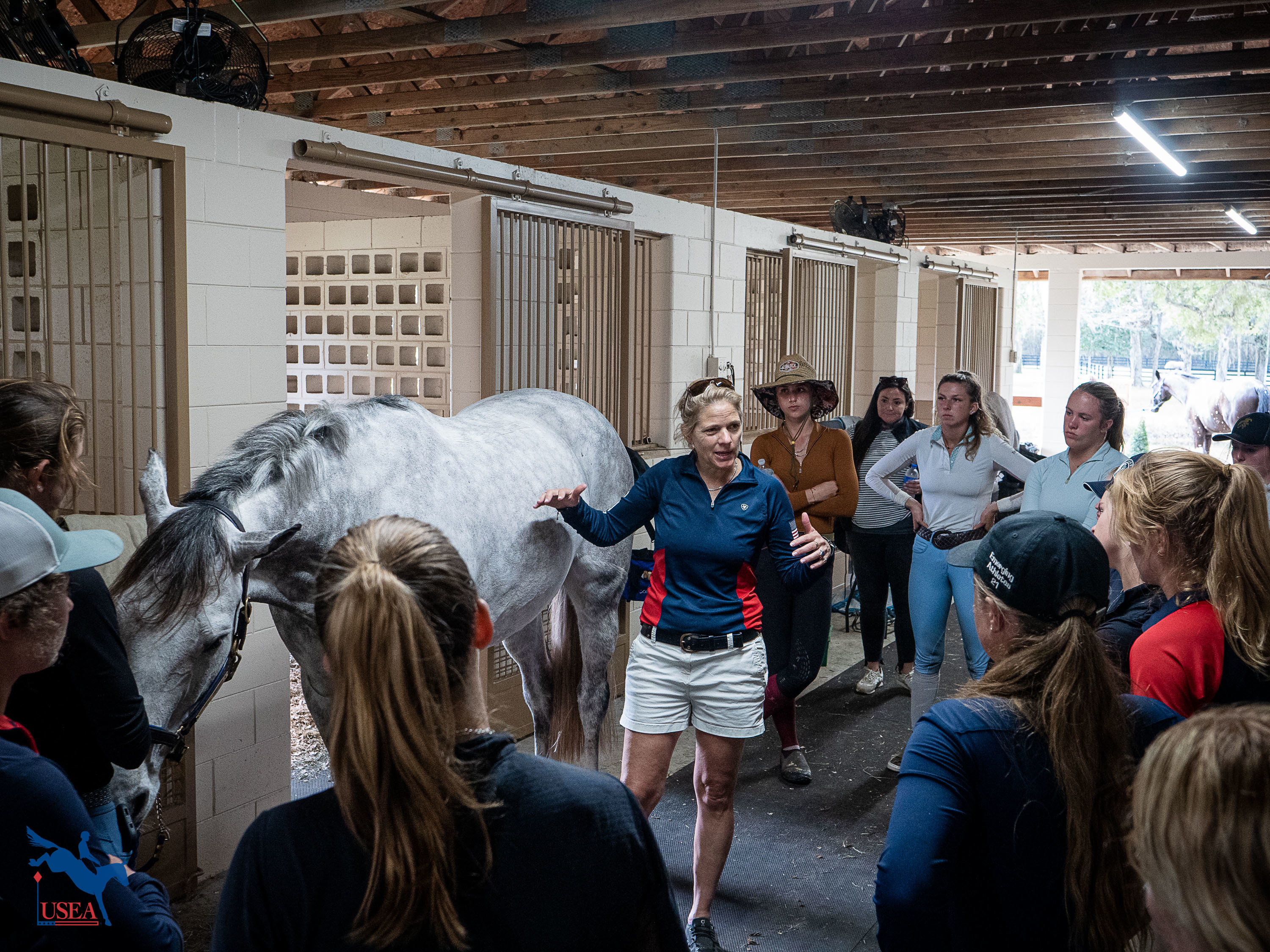
After lunch, the riders were able to listen to a discussion on soundness and anatomy of the horse’s lower leg led by professional groom and former USEA President Max Corcoran. Soundness, shared Corcoran, begins with understanding the anatomy, including the tendons, ligaments, and bones of the horse’s legs. After some discussion inside, the group went to the barn to have some hands-on experience palpating the deep and superficial digital flexor tendons.
From the theory of adjusting stride length and understanding what responsibilities riders themselves have when riding their horses, to discussion on equine anatomy, and mounted exercises, day two was filled with lots of continuing education for the 19 EA21 participants. It takes intentional preparation and thought behind maneuvers on course to be successful, which these riders were able to put to practice. They will get the chance to continue learning about how they can improve their riding on day three, which goes back to looking at dressage.
Review all of the coverage from the EA21 Camp here.
About the USEA Emerging Athletes 21 Program
The purpose of the USEA Emerging Athletes 21 program (EA21) is to identify and provide consistent quality instruction to the next generation of elite event riders. The aim is to create a pipeline for potential team riders by identifying and developing young talent, improving horsemanship and riding skills, and training and improving skills and consistency.
The USEA Emerging Athletes 21 Program was launched in 2022 with a model of five summertime regional clinics taught by selected USEA Eventing Coaches Program (ECP) instructors, leading to a winter national camp consisting of selected Young Riders from the regional clinics. Athletes who are 21 years or younger, are current members of their USEA Young Rider Area program, and are established at the Training Level or higher, are eligible to apply for the EA21 program. Applications for the 2023 regional clinics will open in January/February, 2023.
The USEA would like to thank Kerrits, WeRideTogether, and Ride iQ for their support and sponsorship of the EA21 national camp.
